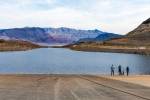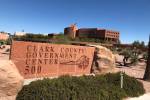Nonprofit organization focuses on water, waste, soil, food
The task of creating a more resilient community can often seem overwhelming, assuming one is even thinking about it at all. Fortunately more and more of us are not only thinking about it, but actively looking for ways to make a difference. There is so much to do. Effective change has as much to do with the way people think as the nuts and bolts of it.
The best efforts I have seen over the years have one common and essential element: community involvement. When individuals participate in group activities and projects, important connections are formed that lead to greater knowledge, satisfaction, a sense of accomplishment and the fundamental shift in thinking necessary to carry it all forward.
The ideal scenario might involve an integrated, multifaceted program that is effective, engaging and fun. It must lead to lasting change. It might start with a small group as a grass-roots effort among neighbors and friends, but spread to the entire community and beyond. It would involve education, hands-on training and group participation, creating tangible results that everyone could see, appreciate and value.
The Las Vegas Valley is home to some great organizations, programs and engaged citizens. Sometimes it’s good to look beyond our locale to see what others are up to. I’d like to focus your attention on some of our neighbors to the south in Tucson, Ariz.
That is the location of the nonprofit Watershed Management Group. Fortunately, I am on its mailing list.
Its latest “newsletter” is more like a 24-page manifesto on the essentials of resiliency. It is so good I wanted to share it with as many of my friends and neighbors as possible. First, here is a little background on the group.
The Watershed Management Group’s mission statement reads: “WMG develops community-based solutions to ensure the long-term prosperity of people and health of the environment. We provide people with the knowledge, skills, and resources for sustainable livelihoods.”
Cool! Who wouldn’t want that?
They envision a world in which:
n Everyone has the natural resources they need while ensuring adequate resources for future generations through wise and creative management;
n Communities cooperatively and sustainably manage the natural resources within their watershed;
n Communities develop in concert with their environment, and the success of development is measured by the health of ecological systems, the prosperity of people, and the strength of communities.
WMG uses a deeply integrated approach to achieve its goals. Tools and services include rainwater harvesting, graywater reuse, sanitation, composting, waste recycling, watershed management, agriculture, agroforestry and even geographical information systems. Education and training are major components of their work.
The newsletter’s focus is on the water, soil, nutrient, food cycle, with emphasis on practical solutions for building healthy soil in urban and suburban environments. I believe that is the essence of any attempt at long-term viability, especially in the challenging environment of the desert Southwest.
The publication illustrates how to create abundance rather than waste while cleaning up our environment. Its programs engage local residents, building connections and community.
In addition to its website and newsletters, WMG has produced some great video resources, too. The latest is entitled “Waste Not!” and is all about rethinking the concept of waste.
It features the ever-humorous Brad Lancaster as he creatively illustrates some very interesting solutions to several of our most pressing problems. The video can be found on its YouTube channel at www.youtube.com/user/Watershedmg/.
From my perspective, the Watershed Management Group is doing great work, engaging and transforming its community and beyond. Fortunately, it has also made its excellent newsletters available online. Download and read the spring 2014 issue right away. You’ll find it at www.watershedmg.org/newsletter/.
If we want to hang around for the long term, we need to build a vibrant local, natural infrastructure, improving the ways we use water while closing the loop on the nutrient cycle. Thanks to our friends in Tucson for sharing some really great ideas!
Steve Rypka is a green living consultant and president of GreenDream Enterprises, a company committed to helping people live lighter on the planet. For more information and links to additional resources relating to this column, or to reach Rypka, visit www.greendream.biz.























